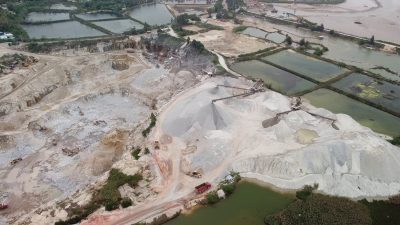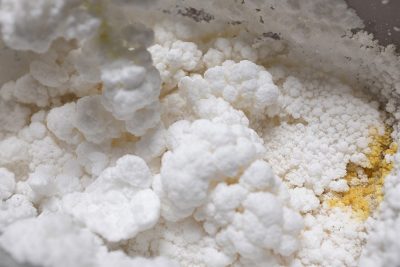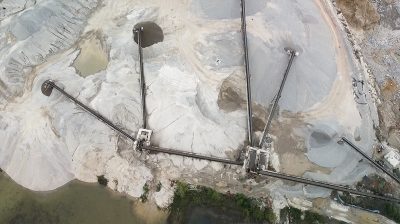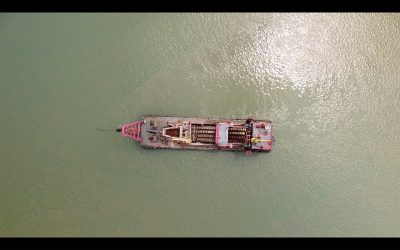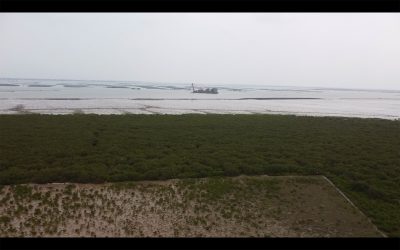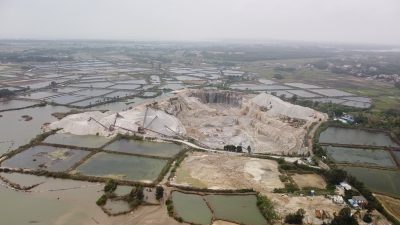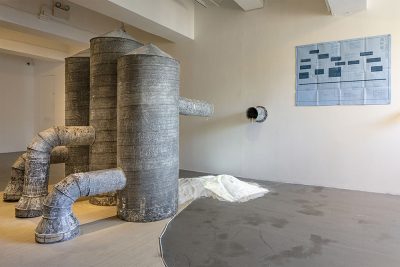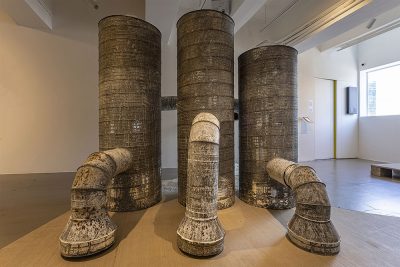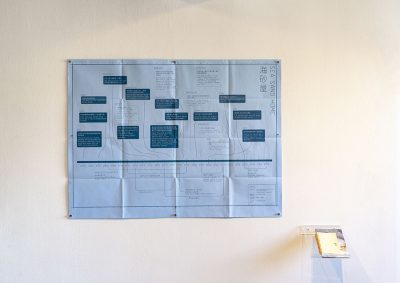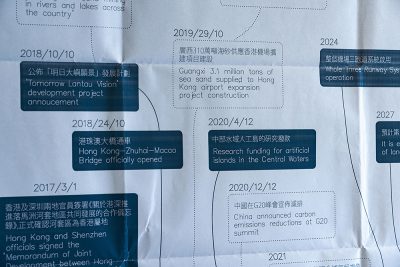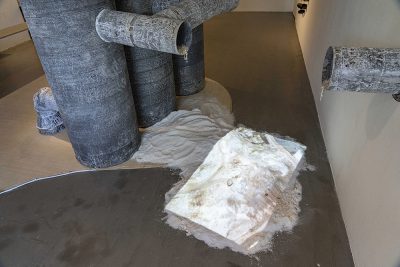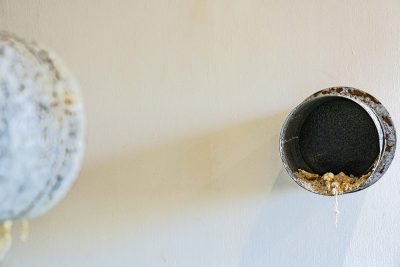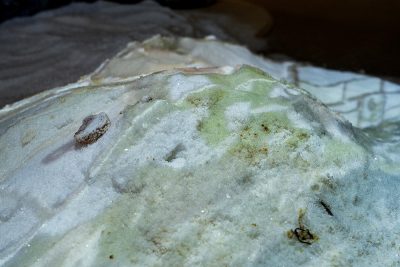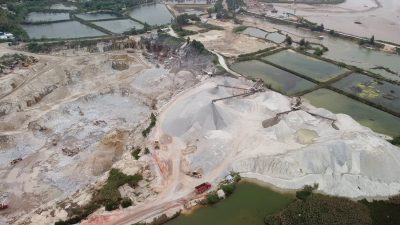Sea Sand Home (2021)
Installation with sculptures, salt, graph, publication, video, and sound recording
Single-channel video | 16:9 | HD | Colour | 8’40” | Silent
Sea Sand Home is the first chapter of Lee’s ongoing long-term project Southern Swallows Fly Low, which focuses on social infrastructure, the imagination of Land, and human migration. It is also the last chapter of the Displacement hexalogy, the only one that does not derive from the point of history.
Born and raised on an island, my imagination of the land arrives relatively late. In 2019, when a series of social infrastructures were in full swing, the Hong Kong-Zhuhai-Macau Bridge was open to traffic, the Lantau Tomorrow Vision development plan was announced, the reclamation of the third runway of the Hong Kong International Airport was underway, the Lok Ma Chau Loop was partially opened, and the construction of the Guangzhou-Shenzhen High-Speed Rail Hong Kong Section entered the final stage after several serious delays. I emailed government departments to inquire about the source of the ‘sand’ in Hong Kong’s beaches. As land grows rapidly in our society, has the land under our feet been there ‘since time immemorial as a matter of course? The paradox of reality is that – the extra land does not necessarily come from Hong Kong; what was originally Hong Kong’s has been divided up and integrated.
In addition to the geographical integration of the Mainland and the islands, a metaphysical ‘Handover / Return’ has also been produced, like implanting the Motherland into the ‘body of the child’. In secondary school economics classes, I was taught that soil and sand are free goods, that is, the opportunity cost is too low to be taken into consideration in transactions. Now, in hindsight, the free goods are often the most expensive, at the cost of resource consolidation, removal of borders, and population displacement.
I tracked down one of the major sources of sand for recent Hong Kong reclamation projects, Qinzhou in Guangxi, China, and tried, though futilely, to find a breakthrough in the rapid development and integration process. The chloride ions contained in the ‘salt’ of the sand are most likely to destroy the building structures, i.e. the material tends to involute and self-consume, as if entering an extreme cycle, eventually disintegrating and self-destructing as time goes. The architecture industry commonly refers to buildings with high chloride ions in the sand as ‘Sea Sand Houses‘ – a name that belies danger with beauty.
